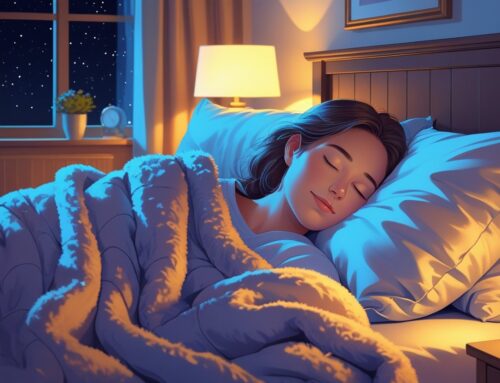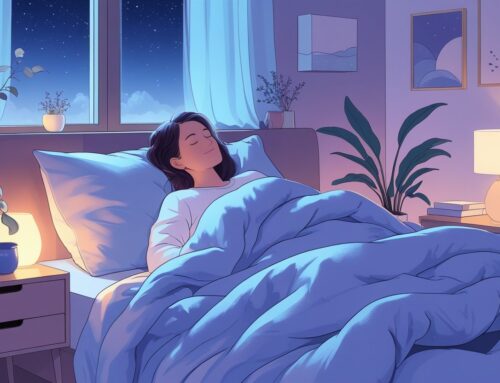Determining the best sleeping position with a CPAP machine is important for both comfort and effective treatment. Side sleeping is often the best choice because it keeps airways open and reduces issues like mask leaks and irritation. It also lowers the risk of worsening symptoms due to gravity, especially compared to sleeping on the back.
For some, sleeping on the back while using a CPAP machine might work, but changes like elevating the head or using special belts are often needed to avoid lower back strain and to help with conditions like acid reflux. Others may find it useful to combine sleeping positions with other therapies or machines that adjust pressure automatically based on position.
Understanding how sleep position affects CPAP therapy can improve comfort and treatment outcomes. Choosing the right mask and adjusting sleeping habits can make side sleeping easier, while back sleeping can be supported with the right setup.
Key Takeaways
- Side sleeping facilitates airway openness and comfort with CPAP use.
- Back sleeping can require adjustments to eliminate discomfort and address health challenges.
- Integrating therapy techniques and equipment enhances therapy outcomes.
- The right mattress, especially one with adjustable firmness and proper support, helps CPAP users maintain optimal sleep posture, reduce mask disruption, and sleep more comfortably throughout the night.
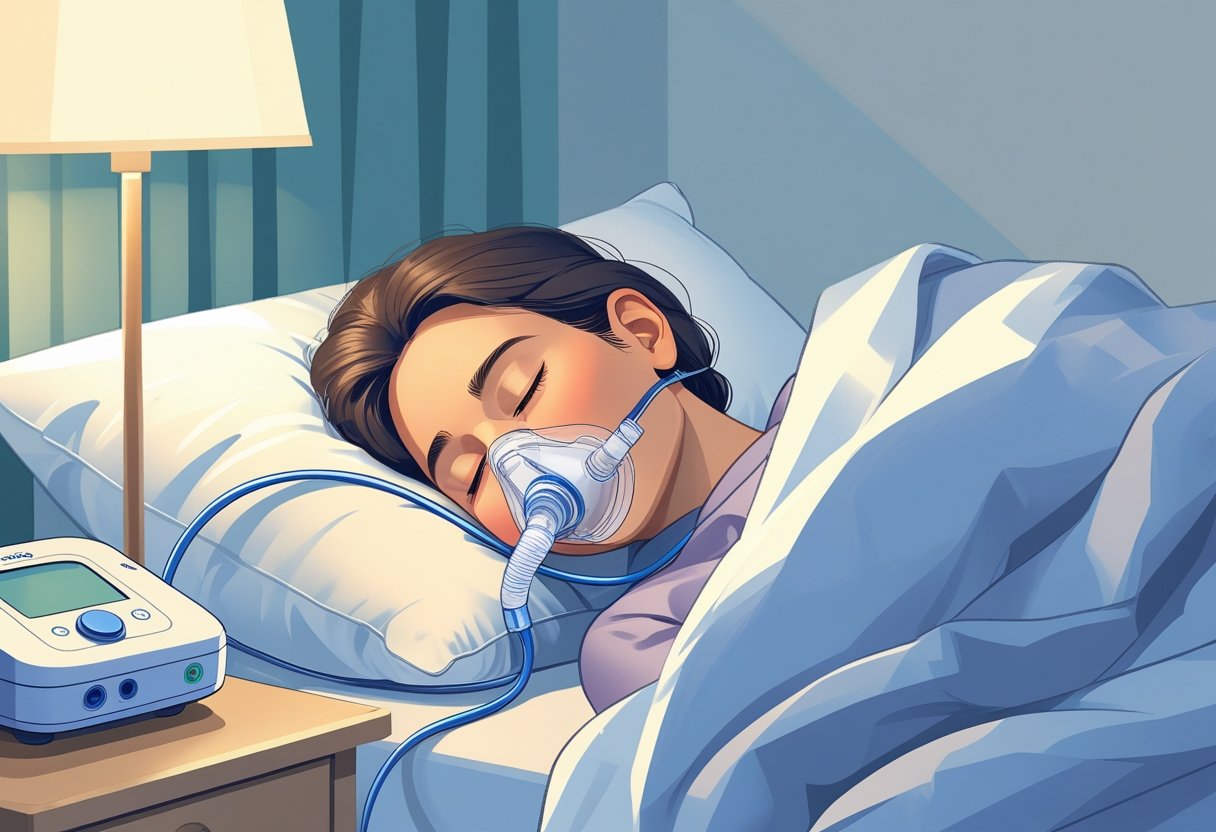
Why Sleep Position Matters With CPAP
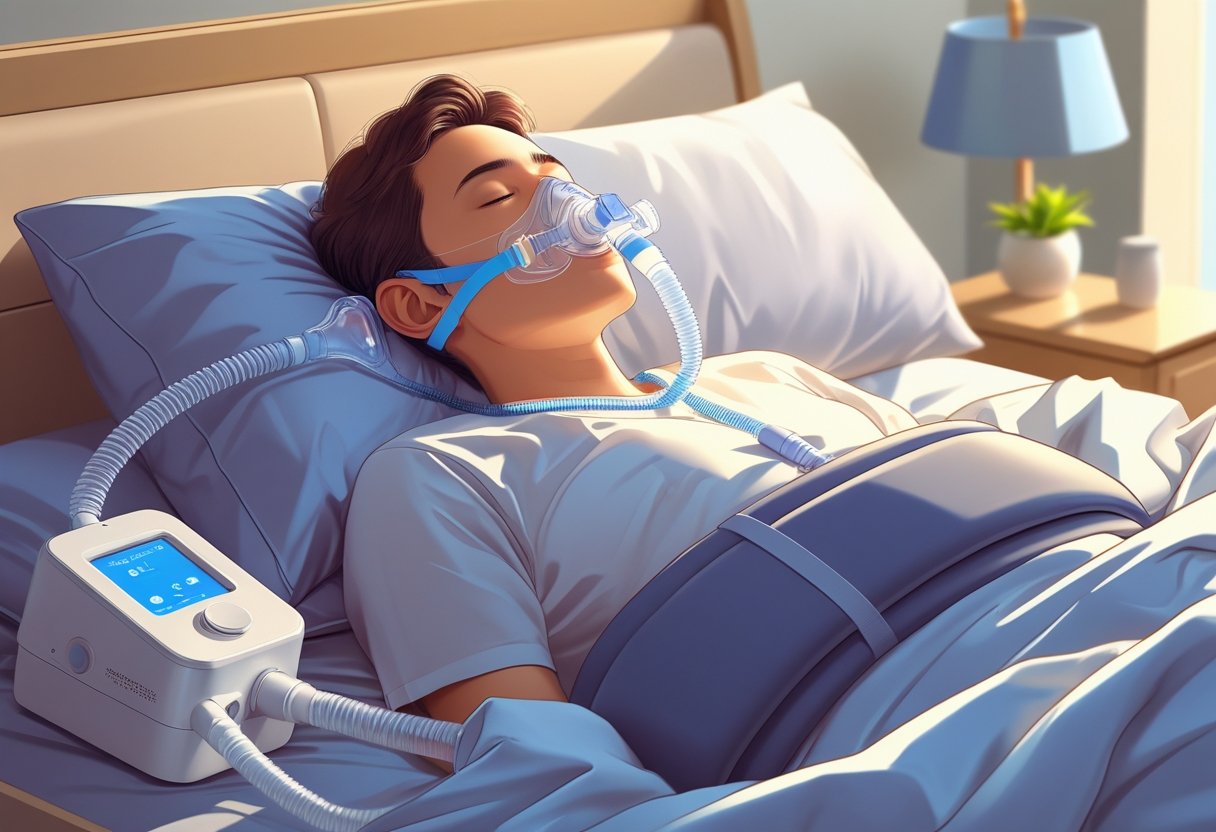
Sleep position influences how well the CPAP machine functions and how comfortable it is to use during the night. It impacts breathing, how the mask feels, and how the tubing functions at night.
Impact on Airway and Breathing
Sleep position influences how open the airway remains throughout the night. Back sleeping tends to make the tongue and soft tissues roll backward, which closes the airway. This typically requires more CPAP pressure to maintain even breathing. Side sleeping keeps the airway more open, lowering pressure requirements.
For individuals with positional sleep apnea, only breathing difficulties occur or become worse on the back. Pressure settings may need adjustment on a position-dependent basis, or an APAP machine that automatically adjusts pressure may be helpful. Posture can decrease apnea attacks and increase oxygen flow.
CPAP Mask Fit and Comfort
The sleeping position alters how the CPAP mask sits on the face. Side sleepers may have leaks since the mask rubs against the pillow. Soft-buckle and fabric-surfaced masks work great with side sleepers in order to seal well and feel comfortable.
Back sleepers would prefer full face or nasal masks as these are more stable because they can manage higher pressure well and do not push sideways into a pillow. Stomach sleepers have trouble with mask leaks because of pressure on the mask, so nasal pillows or smaller masks would be the most suitable to keep things from being interrupted.
Tubing Management and Movement
Where tubing is located and travels during sleep varies with CPAP sleeping position. Back sleepers find tubing that happens to fall off the face naturally, minimizing mask pull or leaks. Side sleepers might have to reposition tubing so it doesn’t become compressed between face and pillow, leading to discomfort or displacement of the mask.
Others employ tubing clips or hose holders to hold things in place and prevent the hose from pulling on the mask. Good tubing management prevents air leaks and enhances overall therapy efficiency by providing smooth airflow and mask stability throughout the night.
Best Sleeping Position for CPAP Users
The most comfortable sleeping position with a CPAP machine is based on comfort, air pressure requirement, and mask seal. Some sleeping positions keep the airway open better than others, while some others can lead to leaks or discomfort. The optimal position improves the effectiveness of CPAP therapy and minimizes problems such as shifting masks or swallowing air.
Side Sleeping With CPAP
Side sleeping tends to be the most comfortable position for users of a CPAP machine. It prevents airway collapse, which decreases the risk of apnea events. Side sleeping, especially with a mask that has soft edges and secure fit, becomes more comfortable for many users. Side sleeping may also alleviate such problems as acid reflux (GERD), which upsets some CPAP users while sleeping flat on their backs. Side sleepers find soft-buckle masks and cloth surfaces to the face helpful, as they avoid air leaks from pushing the mask against a pillow.
But full face masks can feel heavy and tend to shift upon side lying. Side sleepers should opt for minimal displacement masks and make sure that the straps are tight but not excessively so.
Back Sleeping With CPAP
Back sleeping is generally advised for patients who require greater CPAP pressures. It maintains the airway in alignment and facilitates more direct airflow. Nasal or full face masks are more likely to remain in place while sleeping on the back, reducing leaks. Some individuals, though, do not like sleeping on their backs or have lower back pain. Pillows under the knees or a wedge to lift the head can decrease discomfort and alleviate acid reflux when sleeping on the back.
For patients with positional obstructive sleep apnea, sleeping on the back may exacerbate apnea events. Some patients need to set their CPAP machine to full fixed pressure while sleeping on their back because obstruction of the airway might be more severe in this position.
Stomach and Partial Stomach Sleeping
It is difficult to sleep on the stomach or even half on the stomach with a CPAP machine. The mask can be pushed against the mattress, and it will leak or be difficult to maintain in position. Pressure on the mask and the face can decrease the comfort of the position. Since the airway can be less stable in this position, it might not be ideal for those who require it to have constant CPAP pressure. Those who sleep on their stomach could use specialized masks that reduce contact points or less constraining nasal pillows.
Partial sleeping on the stomach, with the subject turning slightly towards one side but overall sleeping on the stomach, is also occasionally better tolerated. Nevertheless, maintaining a secure mask fit and preventing leaks is still an important issue in this position.
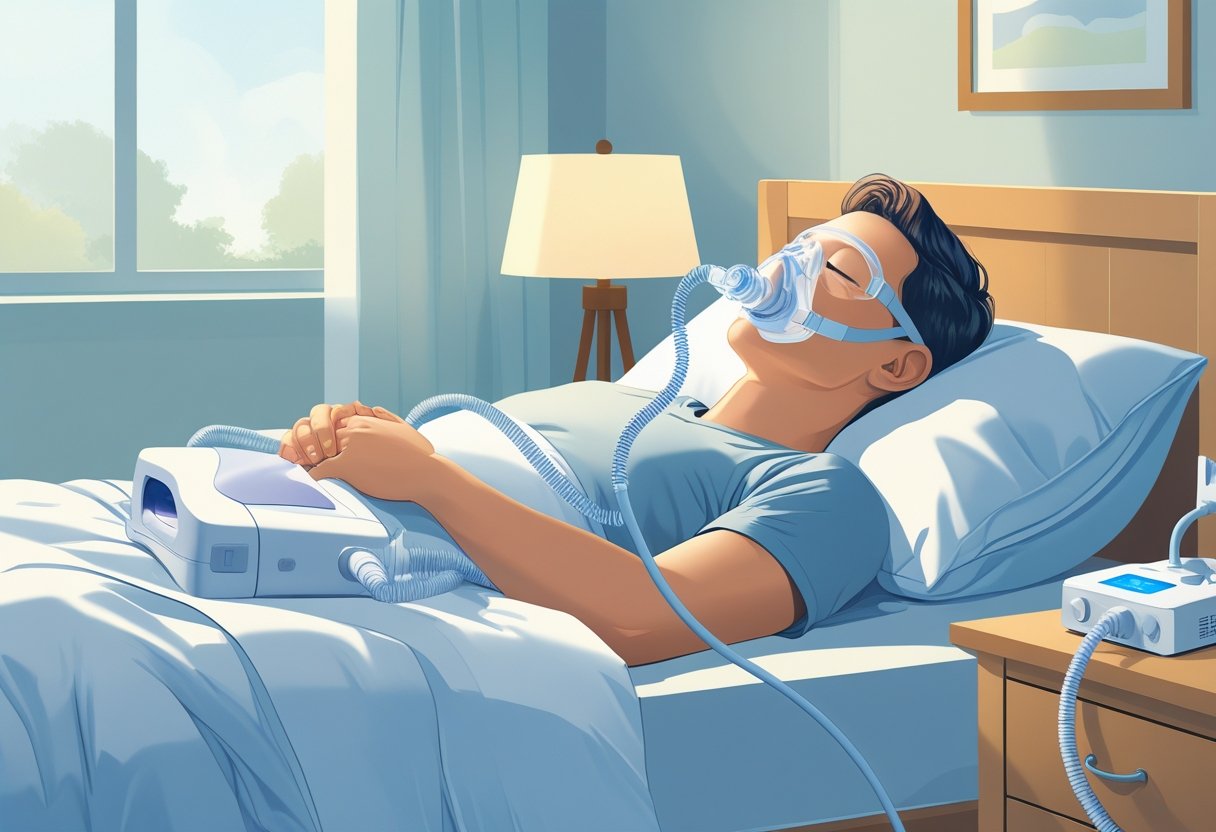
Side Sleeping With CPAP: Expert Tips
Sleeping on the side is usually the best position for CPAP users because it helps keep airways open and reduces snoring. To improve comfort, focusing on the right pillow, mask choice, and tubing management is essential.
Choosing the Right Pillow
The pillow must cradle the head and neck without forcing the mask into the face. A contoured pillow or a CPAP pillow can eliminate mask leaks and pressure points. The pillow that is either too tall or too flat may be uncomfortable or cause obstruction of the airways. The objective is to position the neck so it aligns with the spine, keeping airways open.
Having a body pillow can assist in stabilizing the body and minimizing tossing, and it is simpler to remain on the side during the entire night. The pillow should be able to provide enough space for the mask and hose without being at awkward angles.
Mask Selection for Side Sleepers
Side sleepers tend to have mask discomfort since one cheek is forced against the pillow, leading to leaks or discomfort. Low-profile or nasal pillow masks minimize this pressure. Full-face masks are not as good as they are bulkier, with a higher likelihood of slipping or feeling uncomfortable. Nasal pillows that fit within the nostrils typically provide greater movement freedom.
Adjustable headgear is essential to ensure a tight but comfortable fit. A mask selection is based on individual comfort, facial shape, and sleeping behavior.
Tubing Management for Comfort
Tubing can pull or drag on the mask if not managed well, causing disturbance during sleep. A hose clip or CPAP hose management system can hold the tube in place and minimize drag. A swivel or flexible hose design assists with preventing kinks while rolling over in sleep. Placing the hose over the head rather than around the neck can also avoid entanglement.
Certain users prefer a hose holder or stand to keep the tubing away from the bed and eliminate undue pressure against the mask or face.
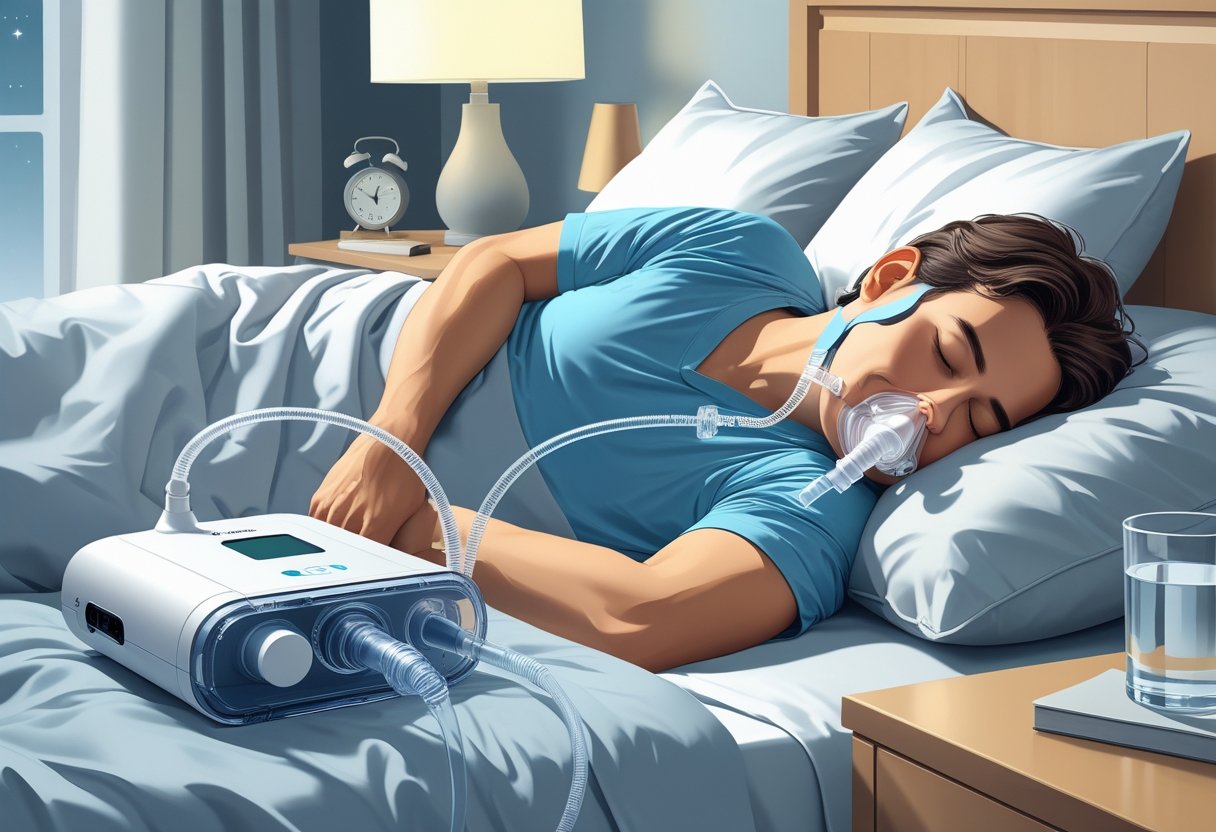
Back Sleeping With CPAP: Advantages and Challenges
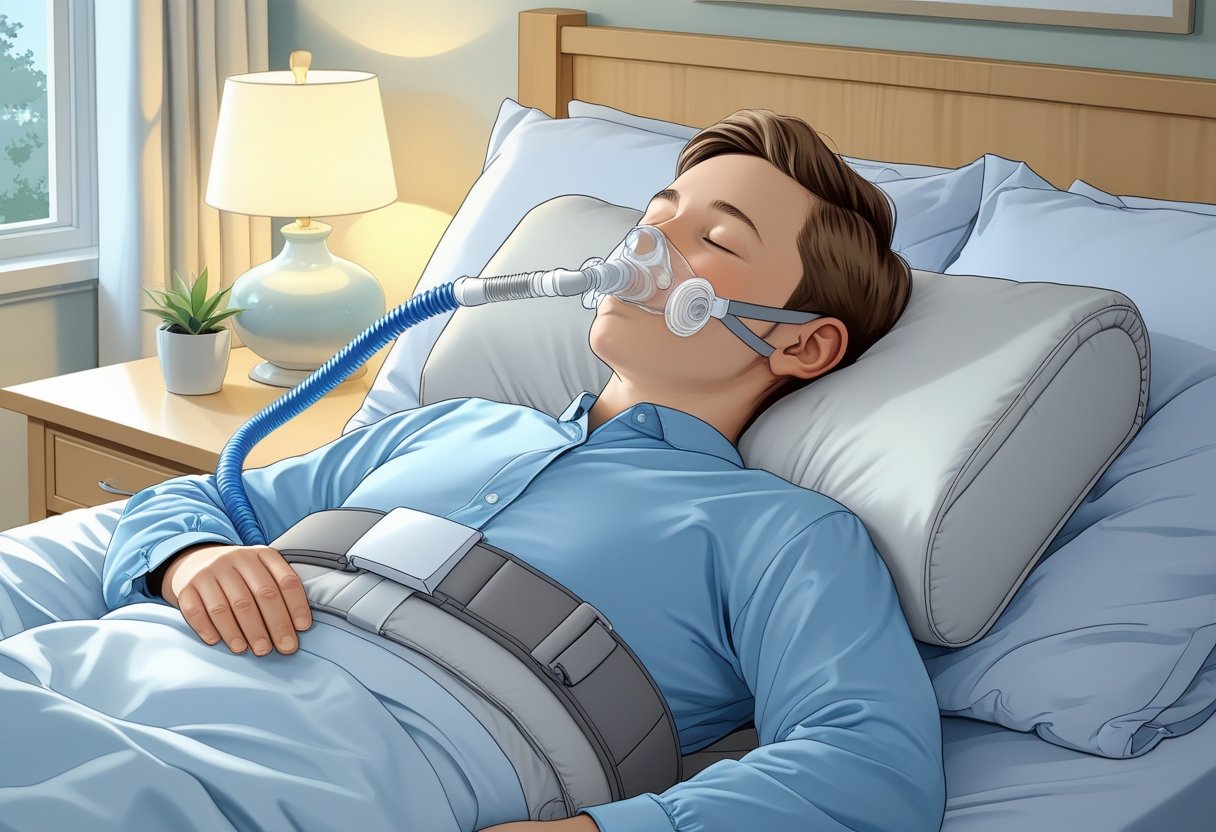
Back sleeping with the CPAP machine can assist in airway alignment and effectively cater to higher pressure requirements. It does, however, necessitate methods for ensuring comfort and alleviating factors such as mask leakage and lower backache.
Head and Neck Alignment
Sleeping on the back keeps the head and neck in a neutral position, which can keep the airway open. Propping the head up with pillows or adjustable bed blocks is commonly suggested. This decreases pressure on the airway and can alleviate acid reflux symptoms.
Proper support of the neck is necessary to prevent strain. Resting a rolled towel or pillow under the knees can relieve lower back strain. Using a CPAP pillow that is designed to fit around the mask also ensures stability and maintains proper head position to avoid displacing the mask and enhancing comfort during the night.
Correcting Snoring and Apneas
Back sleeping can pose a higher risk of airway collapse for some individuals, which could exacerbate snoring or apnea episodes. CPAP machines usually, however, produce better pressure delivery in this sleeping position, particularly with a suitably fitted nasal or full face mask.
Leaks of the mask are a frequent difficulty when sleeping on the back. Users appreciate masks that fit well in this position. Second, if apnea increases when sleeping on their backs, raising the head can decrease events by enhancing airflow. Some patients take advantage of positional devices or bumper belts to deter undesirable movement during sleep while keeping CPAP effective.
Special Situations and Combination Approaches
Individuals require more accommodating solutions for sleeping with CPAP. Modifying the way in which they sleep or employing additional aids improves comfort as well as treatment outcomes.
Partial Stomach and Hybrid Positions
Full-time stomach sleeping is usually not ideal for CPAP users because it may trigger mask leaks and pressure problems. However, a partial belly or hybrid position, where the sleeper lies primarily on their side but looks sideways toward the stomach side, may work for some. This position helps in dilating the airway while at the same time, maintaining mask stability. It would work best with a low-profile nasal pillow mask, or simply a small mask, which would prevent the user’s discomfort.
Users can try adjusting pillow placement in order to maintain the seal on the mask and minimize pressure sores. Adequate support under the hips and chest can also be used to maintain spinal alignment during hybrid sleeping to increase comfort and therapy efficacy.
Positional Therapy Devices
If side sleeping is optimal but challenging to achieve, positional therapy devices provide an answer. The devices discourage back sleeping, something that usually aggravates sleep apnea. Examples are bumper belts and vibration alarms. Bumper belts cause discomfort when the wearer attempts to roll onto their back, forcing them to remain on their side.
Vibration alarms sense when the user rolls onto their back and softly vibrate to cue a position shift without waking them entirely. Employing these devices in combination with CPAP therapy can minimize apnea events by maintaining the airway open and firm.
Both of these options are suitable for individuals with positional sleep apnea or those who have difficulty sleeping on their side independently.
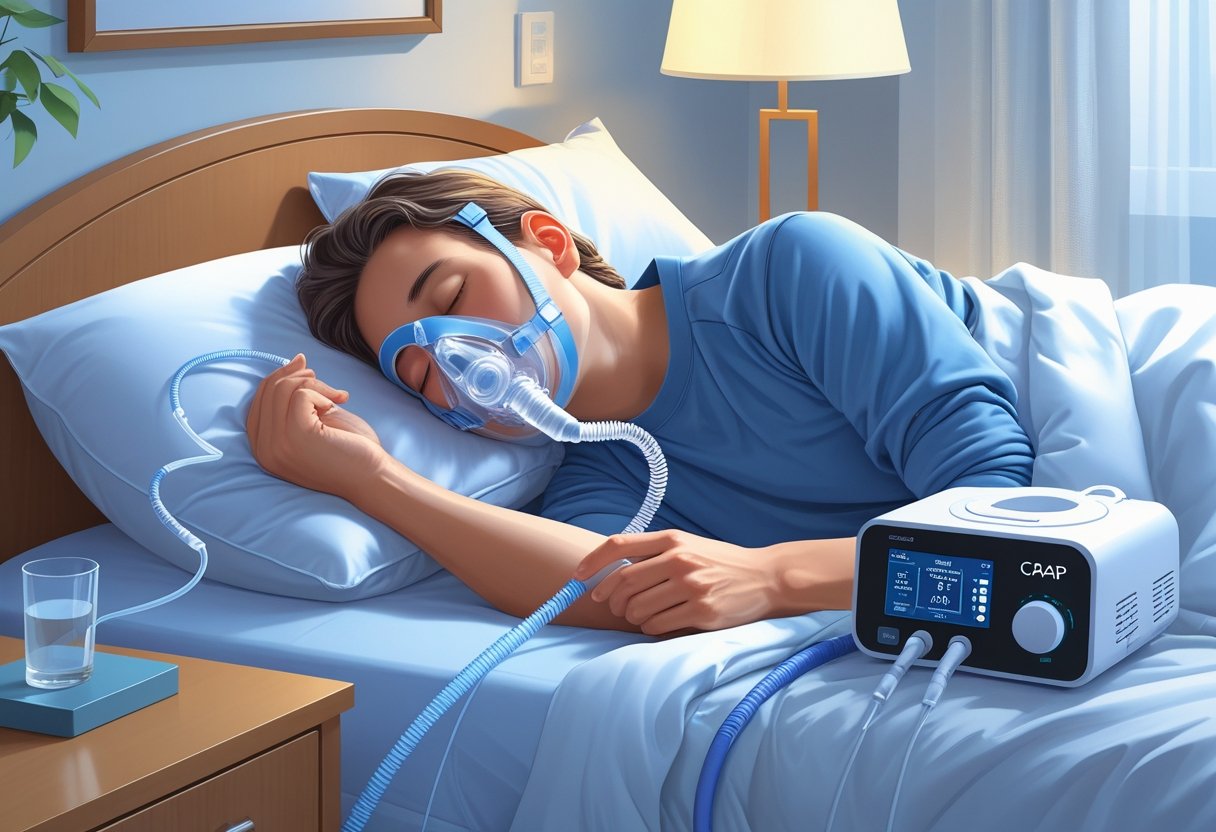
Adjusting to Your Optimal CPAP Sleep Position
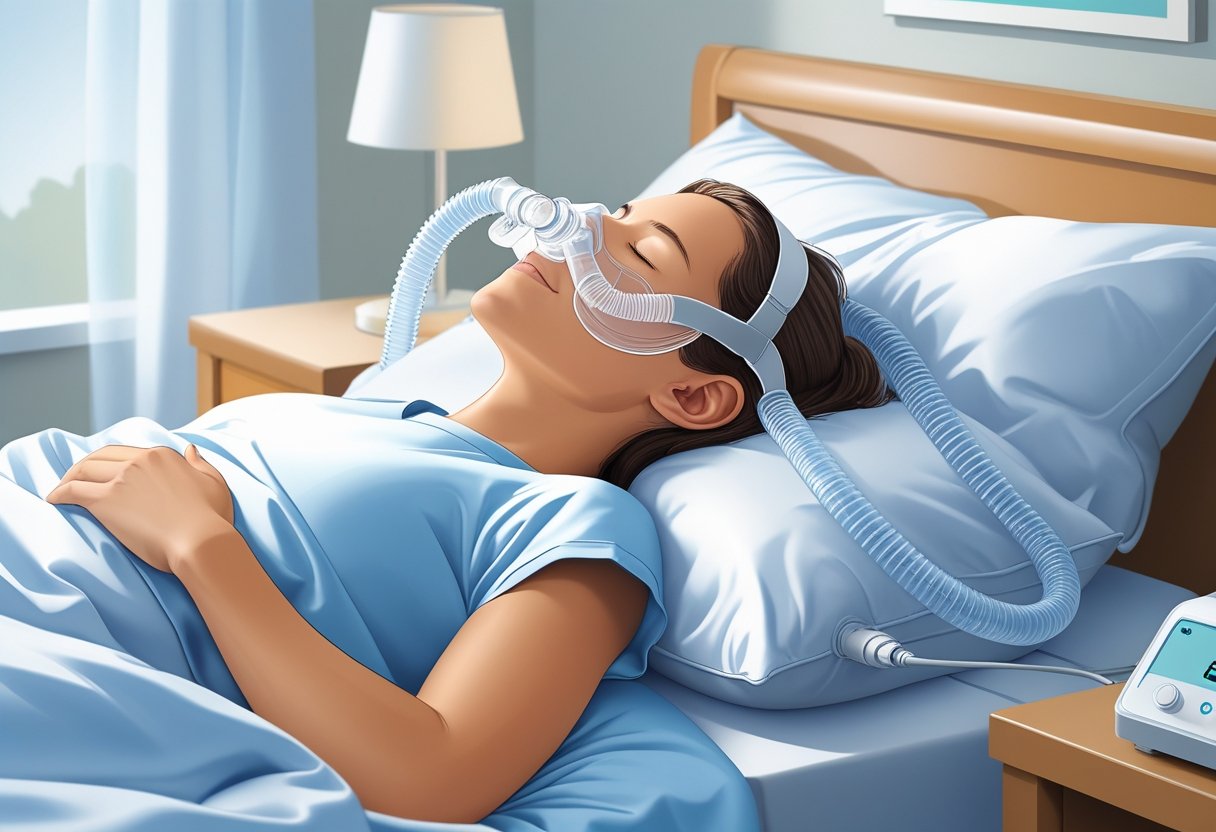
Adjusting to a proper sleep position with a CPAP device comes with patience and incremental adjustments. Time causes comfort and mask fit to increase, which makes therapy more effective. Users tend to develop habits slowly and become accustomed to dealing with typical issues associated with sleep position and mask wearing.
Change Management and Progressive Strategies
New CPAP sleep position adjustment is best done with gradual, gradual steps. Begin by spending brief intervals during the day in the best sleep position, such as side sleeping. Pillows or supports can hold this position in comfort overnight.
Having a routine at bedtime that promotes getting into this position is helpful. For instance:
- A body pillow behind the back will discourage rolling over.
- Using soft material for contact points on the mask minimizes skin irritation.
- Getting used to breathing calmly while wearing the mask conditions the body.
Increasing time in the new position gradually increases tolerance. Gradual adjustments minimize discomfort and make it easier to hold the optimal position for CPAP pressure and airway stability.
Troubleshooting Common Issues
Some common issues are mask leaks, air swallowing, and discomfort associated with particular positions. Side sleepers may experience mask leaks upon pushing against the pillow. To correct this, users can attempt side sleep masks that have soft edges and adjustable straps.
Back sleepers could experience difficulties with increased air pressures. Head elevation with pillows helps decrease pressure discomfort and promote airway alignment. A rolled towel under the knees relieves lower back strain for back sleepers.
When switching positions necessitates pressure adjustment, an APAP machine automatically adjusts. For ongoing issues, seeing a sleep specialist guarantees the mask fit and pressure levels appropriate for the patient’s sleeping patterns.
How to Choose the Right Mattress for Better Sleep with CPAP
Choosing the appropriate mattress can impact the quality of sleep for CPAP users. A supportive mattress that facilitates proper spinal alignment prevents discomfort and enables a uniform and effective sleeping position throughout the entire night.
Some factors to keep in mind:
- Support: The mattress keeps your spine aligned, particularly for side sleepers.
- Comfort: A comfortable surface reduces tossing and turning, which would otherwise dislodge the CPAP mask.
- Pressure relief: Search for materials that relieve pressure on hips, shoulders, and joints to enable you to sleep more soundly.
Natural latex mattresses are usually recommended for their breathable and supportive texture. They also repel dust mites and allergens, beneficial for users who are dealing with nasal irritation or sensitivity.
For individuals who require greater flexibility, an adjustable firmness mattress can be the most versatile choice. It allows you to personalize the feel to suit your sleeping position and CPAP configuration. An example of such a mattress is the Saatva Solaire Mattress, which integrates support and adjustable comfort into a well-ventilated, latex construction.
The Saatva Solaire Mattress is distinguished by its 50 exact firmness settings, which makes it particularly beneficial for CPAP patients who move during the night or require additional spinal alignment. Its natural cotton cover and hygro-wicking layers also work to keep the surface cool and clean, perfect for reducing discomfort throughout therapy.
More CPAP sleep tips:
- Select a CPAP-friendly pillow that supports your mask and tubing.
- If prescribed, raise the head to assist with decreasing airway obstruction or acid reflux.
- Replace your mattress when it is no longer giving proper support or lying uneven.
Taking these actions can enhance overall comfort and make your CPAP therapy more effective night after night.
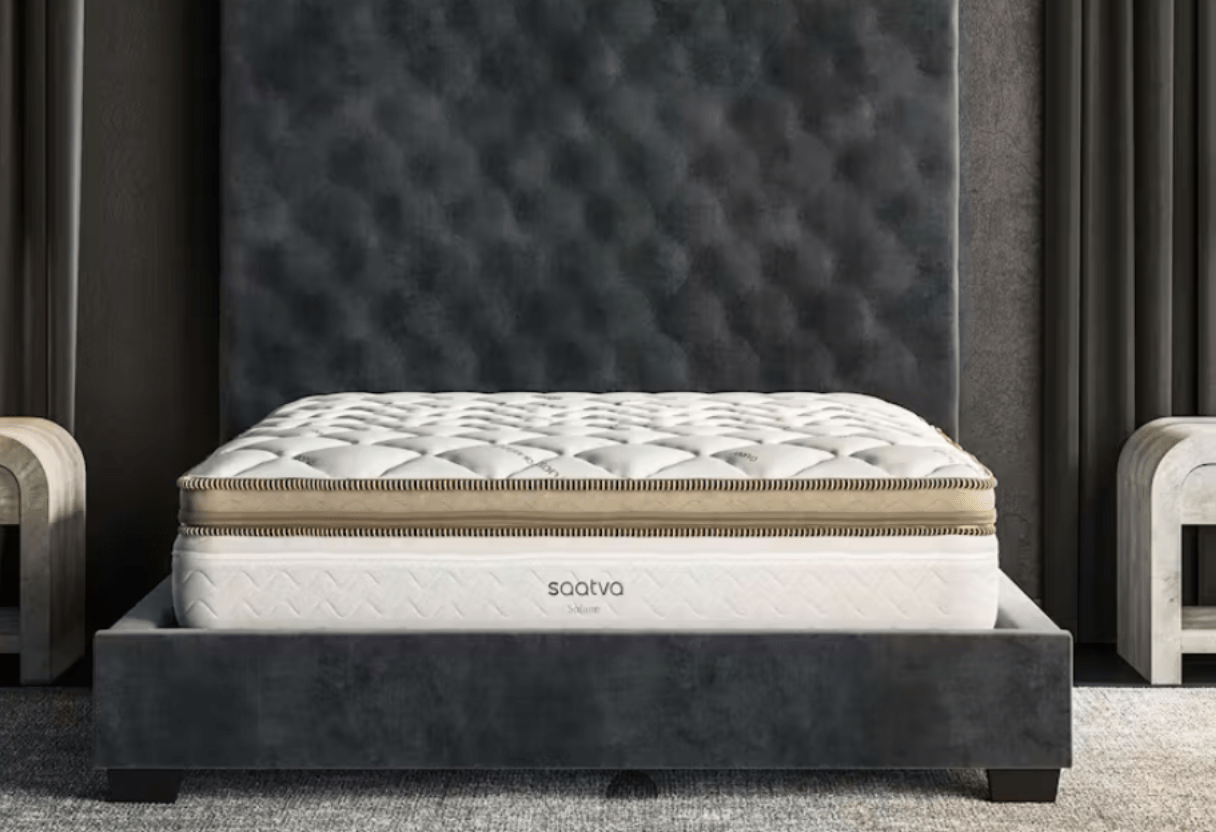
Frequently Asked Questions
Choosing the right pillow, mask, and sleep position help in both comfort and CPAP effectiveness. Since everyone sleeps differently, it’s important to find the right setup that maintains a secure seal and limits air leaks. Over time, CPAP therapy may also have effects on the body that are worth understanding.



